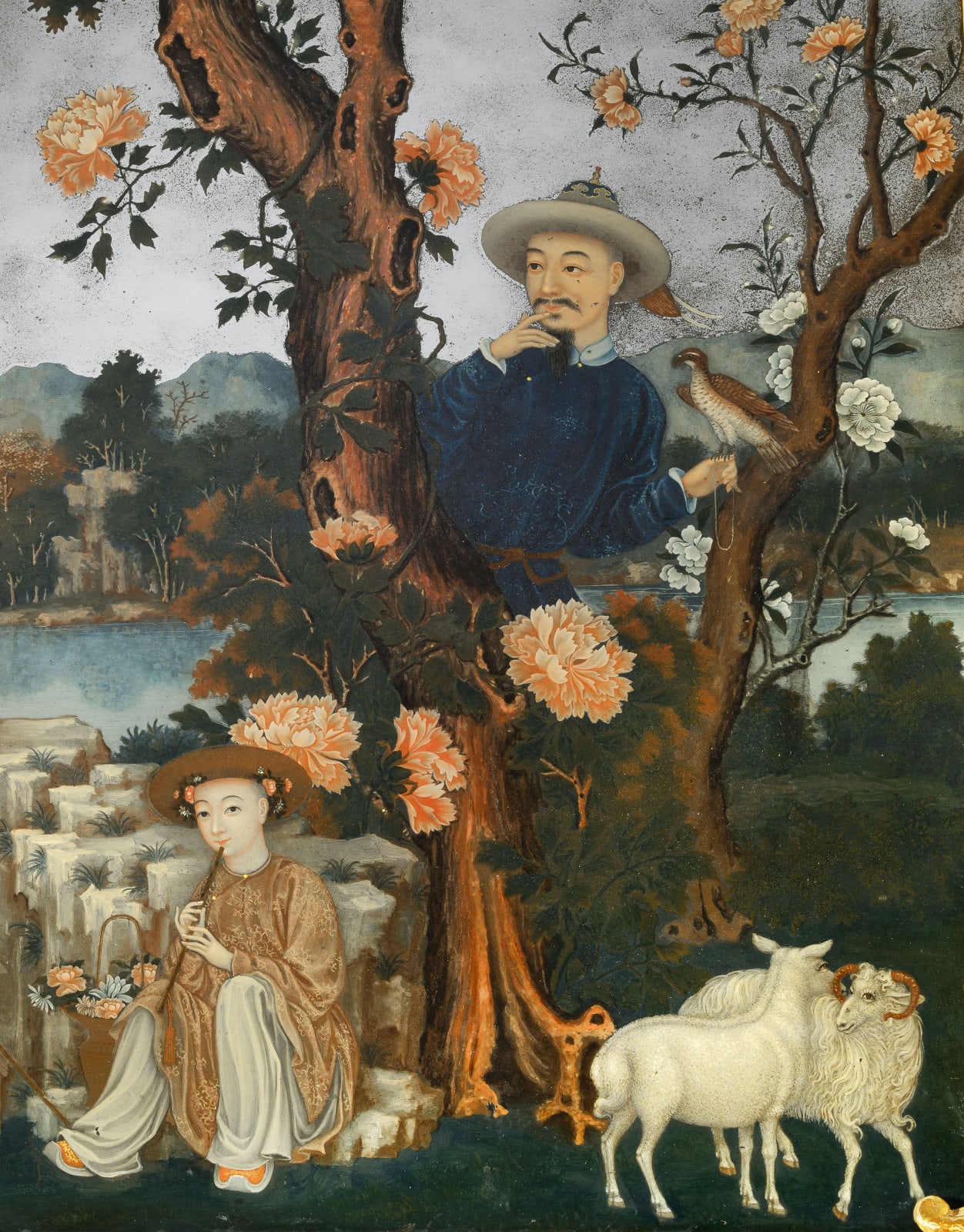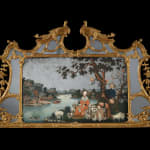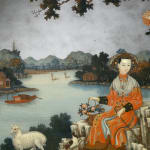A CHINESE EXPORT REVERSE-PAINTED MIRROR DEPICTING THE SHEPHERDESS AND FALCONER
W: 57" / 145cm
Further images
Provenance
With Blairman and Sons Ltd., London
Private Collection: London, UK
The Chinese Porcelain Company, New York, April 2003
Private Collection: New York, USA
Literature
COMPARE
For examples featuring a shepherdess and falconer in an identical manner, see Lady Lever Gallery Liverpool, UK, illus. Audric (2020), pp. 182-3, cat. nos. 118-9; Roger Keverne Collection, Audric (2020), pp. 182-3, cat. nos. 115-6; the Horlick Collection (formerly), Audric (2020), pp. 182-3, cat. nos. 113
Publications
Thierry Audric, Chinese Reverse Glass Painting 1720-1820 (Lausanne, 2020), illustrated and discussed, pp. 141, 183, cat. no. 114
M. Harris and Sons, A Catalogue and Index of Old Furniture and Works of Decorative Art From Late Sixteenth Century - Early Nineteenth Century, Pt. II (London, 1938), p. 194, pl. XIII 4
The Chinese Porcelain Company, Chinese Glass Paintings & Export Porcelain, New York, 8 October - 9 November 1996, p. 26, no. 9
The present painting is part of a small group of mirror paintings featuring the shepherdess and hidden falconer produced in the third quarter of the eighteenth century likely by a group of artists belonging to a common workshop, located on the waterfront at Canton. The falconer and shepherdess feature in an identical manner in mirror paintings in the Lady lever Gallery and the Roger Keverne and (formerly) Horlick collections, alongside which the present mirror is illustrated in Thierry Audric’s important recent study.1
In the scene the shepherdess is accompanied, perhaps unbeknownst to her, by a falconer concealed behind a wutong tree, pensively watching the lady, with a finger to his smiling mouth, the bird perching on his hand. The significance of this surreptitious figure is not entirely clear, but the voyeuristic quality of the scene suggests an entertainment, possibly taken from a Chinese poem or play, that would have been amusing to Chinese and western audiences alike.
Painted mirrors imported from China, transported generally in black lacquer frames, were often re-housed in fashionable giltwood surrounds on their arrival in Europe and England. It is decidedly rarer for a mirror painting to be incorporated into a large overmantel frame with border glass, nearly all the plates of which in the present mirror are the original.
Notable overmantel mirrors incorporating Chinese mirror paintings include the example from the collection of Pierre Durrand, sold Christie's, New York, 27 January 2022, lot 69, USD 600,000. Another striking example, formerly part of the Hon. Mrs. George Keppel’s collection, also sold Christie’s, New York, 18-19 April 201, lot 57, USD 290,500 and later Christie’s, London, 7 July 2016, lot 322, GBP 194,500.
1 See Audric (2020): Lady Lever, pp. 182-3, cat. nos. 118-9; Roger Keverne, pp. 182-3, cat. nos. 115-6; Horlick, pp. 182-3, cat. no. 113





